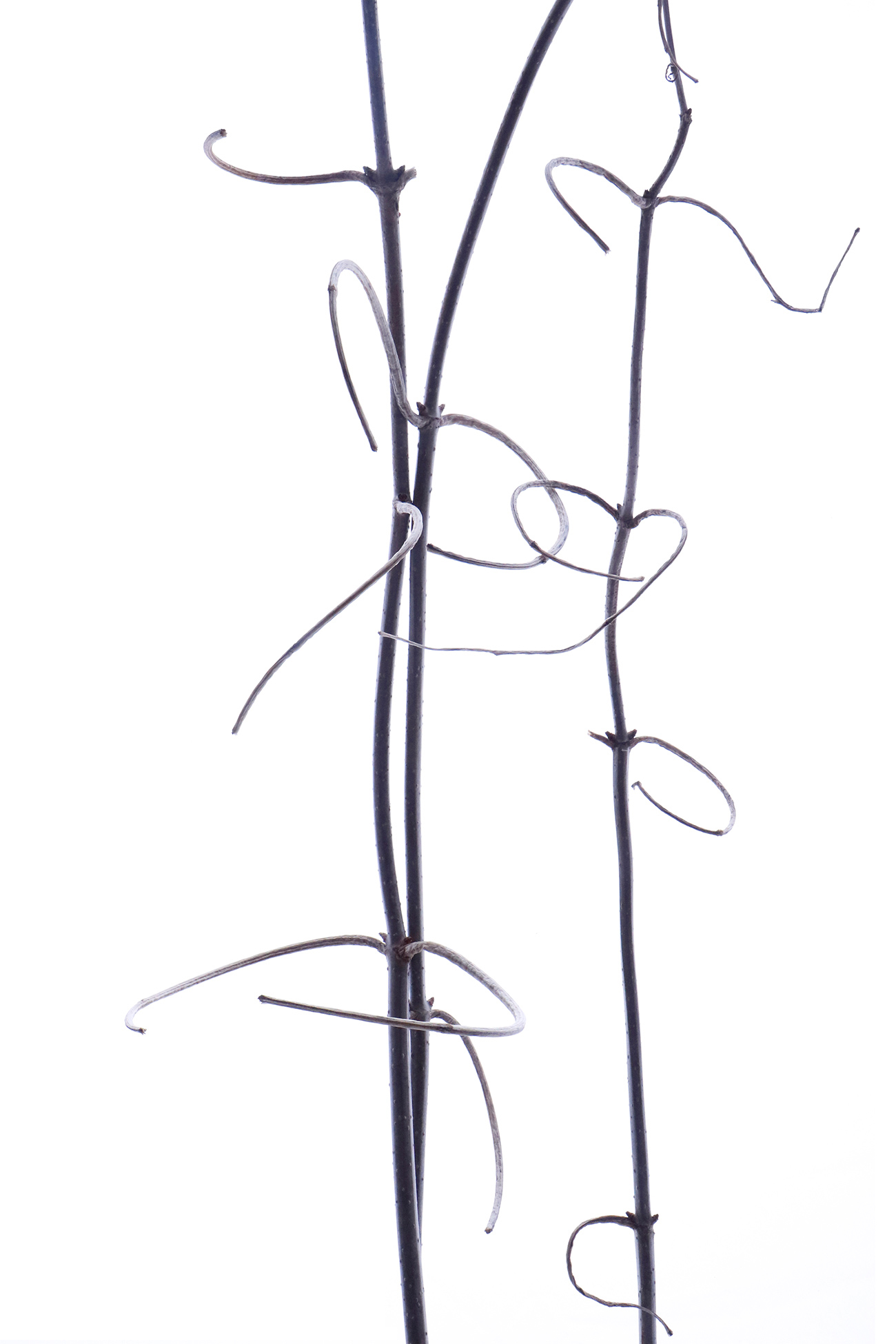
the novice takes careful, measured steps up the ladder of skillfulness. the master leaps from the top rung, and doesn’t fall.
winter motherwort stem and vine
lake johanna, saint paul, minnesota

i thought these leaves looked like a rack of spears waiting for their warriors. then i read that one name for this plant was spanish bayonet. and i was once more proud to be a scientist. we come up with some of the best names.
yucca-like leaves revealed by melting snow (possibly yucca filamentosa)
minneapolis, minnesota

occasionally i will be tempted, in an effort at eloquence or strong feeling, to use the word “dance” to describe a particularly elegant movement or pose, whether made by a human or nonhuman. it’s a fairly common verbal shortcut that i have trained myself not to use anymore, because it happens to break one of my husband’s cardinal rules of language. he participated in too many failed writers groups and poetry workshops, and read too many of his fellow language students’ papers in college, ever to feel any emotion except exhaustion and distaste, when he reads the word “dance” used in this way. so i wasn’t surprised when i asked him for a little help with this caption, and the first thing he said was, “you can’t say ‘dance.'” of course, now i have.
unidentified winter stems
lake johanna, saint paul, minesota
-
Port de bras (indicating dance without saying it)
reply -
So elegant. Thank you for helping me see some of the beauty around us in a different way.
reply

feel free to laugh at me, here in the very the early stages of my target.com and west elm rollout, as i play with what might come next. yes, i know, but i’ve always thought that repeated STILL patterns would make some pretty rockin’ wallpaper, and this mock-up from my assistant, alyssa rupp, has my mind racing.
previously posted STILL images arranged
-
As one who loves fabric, I’ll put in my vote for that as well.
reply -
It says, “JOY” in a most beautiful way.
reply

have you ever noticed how part of the way you can identify certain plants and trees is by the angle of their branches compared to the main trunk? How lindens form a chalice and elms form a flute, and oaks grow their branches almost horizontally? look at how much alike the angles of these daisy branches are. i just found out that the branches of plants and trees are gravitropic. meaning they establish their angles not in relation to the main trunk or to other branches, or to the sun, but to gravity. they will always grow at a specified angle to gravity, regardless of the orientation of the main trunk. there you go. your geek-out for the day. you’re welcome.
wild daisy stems in late winter
lake johanna, saint paul, minnesota
-
Huh! I am now smarter. :)
reply


